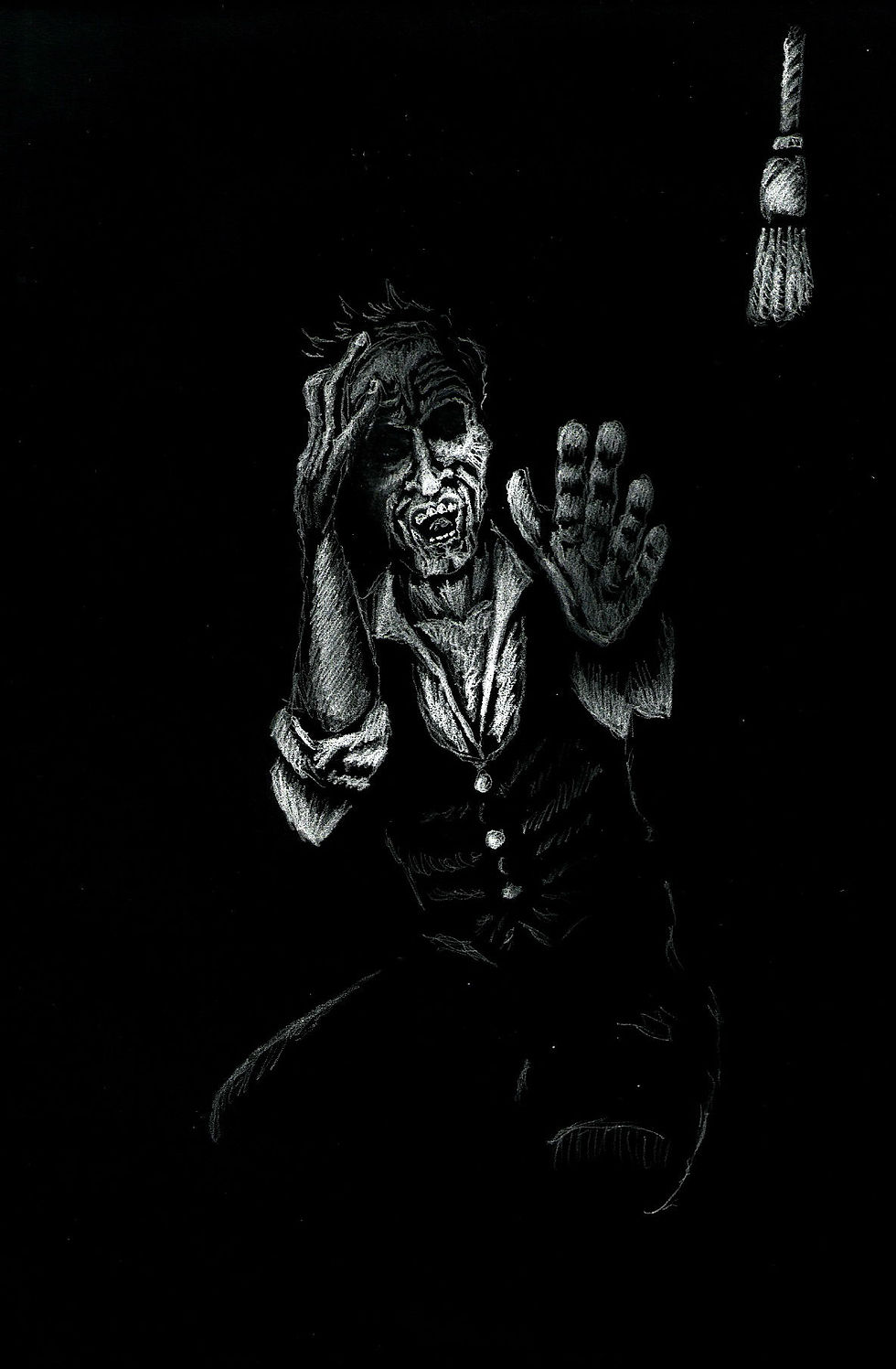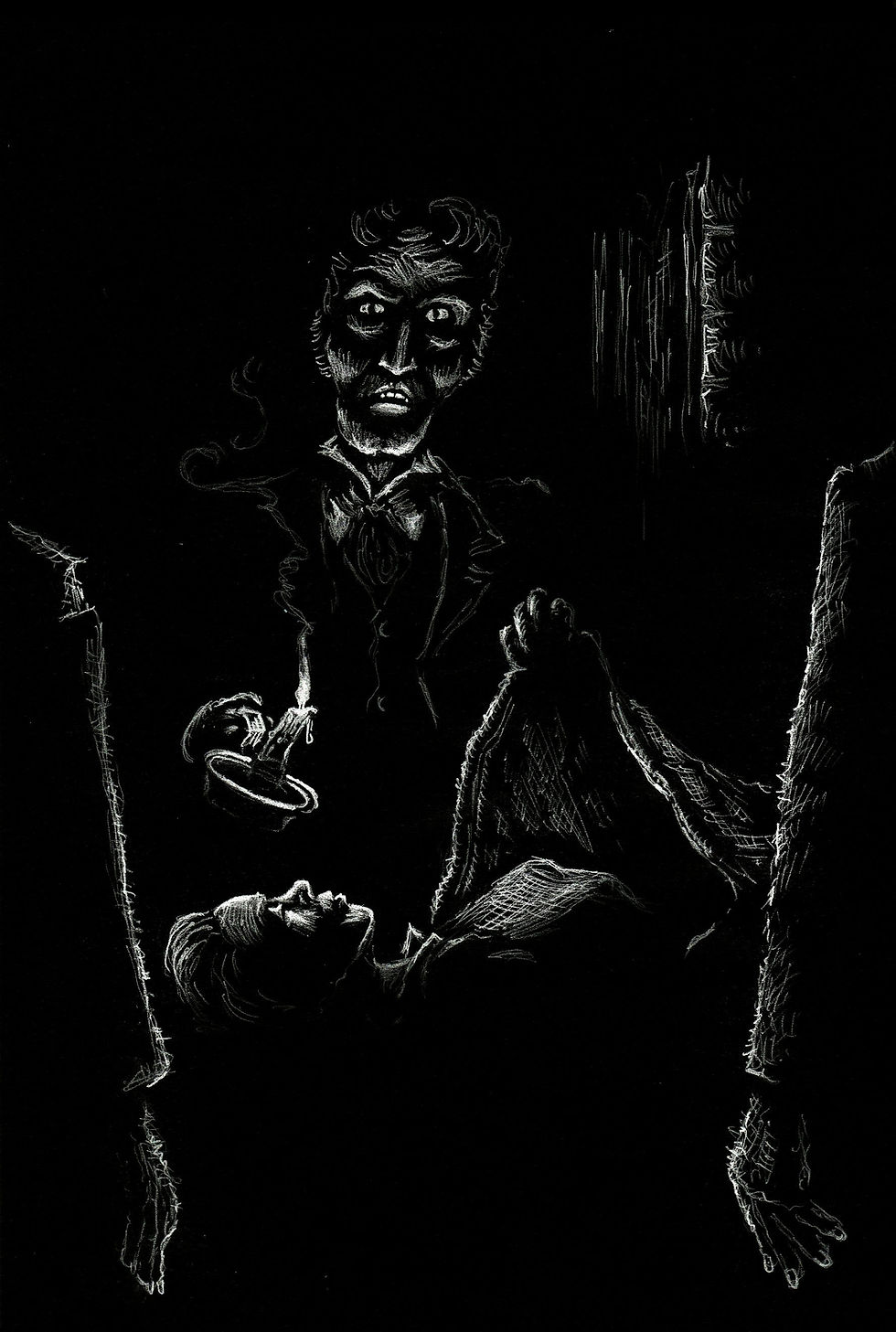7 Great Victorian Ghost Story Writers to Read on Stormy Nights
- M. Grant Kellermeyer
- Jan 12, 2014
- 6 min read
Updated: Sep 3
The Church of England claimed to hold the answers to most of these worries, but the public increasingly found itself disillusioned with their canned responses, seeking truth in the wildly popular realm of Spiritualism. During the Victorian Age (politically, 1837 - 1901, though in The Victorian Ghost Story, I trace the corresponding literary movement from 1852 to 1912 -- sharring elbow room with the Edwardians). The following are seven writers of ghost stories during the Victorian period. If you've relegated your ghostly reading to "The Signal-Man," "Oh, Whistle and I'll Come to You, My Lad," and "The Judge's House," check out some of these writers online or at your prestgious local library.
(Oh, and don't forget to scroll to the bottom to see the Strange Reads YouTube Channel's atmospheric adaptation of this blog post)
7 – E. NESBIT

Starting with the later end of the Victorian era we have Edith Nesbit, a woman whose supernatural stories are wrought with tragedy, irony, senseless misery, and the brooding presence of merciless Fate – just as they should. Her writing is light and engaging, often infused with a twisting tension that drives the pages forward until they topple in a woeful climax. Her most famous tale is “Man-Sized in Marble,” about newly-weds who unwisely keep their door unlocked on Hallowe'en Night, in spite of the grim Norman statues in the church down the road. For something short, shocking, and unsettling, read either “The Mystery of the Semi-Detached” (a man sees a vision of a slaughtered woman in his girlfriend's bed), or “In the Dark,” and spend the night in a chilling wax museum.
6 – MRS. OLIPHANT

Margaret Oliphant was formerly one of Britains most preeminent figures in supernatural fiction. As M. R. James, Ramsey Campbell, and Bram Stoker became more popular, her ghostly charm seems to have blown by the wind, but it is far overdue for a revival. A brilliant writer with a deep gift for endowing her ghosts with pathos, her tales – though often long – are uncommonly tender and heartbreaking. Her influence is thoroughly felt in Edith Wharton's superb American ghost stories – among the best in my nation's supernatural canon. “Old Lady Mary” – the story of a ghost attempting to come to terms with her immateriality – and “The Open Door” (a personal favorite) – a father's blood-chilling account of his son's bought with death after encountering the lost ghost of a little boy – are masterpieces, beautiful and touching.
5 – H. G. WELLS

Often pigeonholed as a writer of science fiction and horror, Wells demonstrates a deft hand at the ghost tale – one which primarily operates through the mediums of psychological fear and dramatic irony. His stories are often tinged with humor –though it be black – and invigorated with spry and vigorous prose which keeps the pages turning. His oft-reprinted “The Red Room” is a study in the psychology of terror, recounting the experiences of a man who knowingly stays in a haunted room, while his darkly comic tale “The Stolen Body” describes an accident during an experiment with an out-of-body experience. Speaking of experience, perhaps one of his best – and tragic – stories is “The Inexperienced Ghost,” wherein a man makes the acquaintance of a ghost and ill-advisedly attempts to deconstruct his nature.
4 – RHODA BROUGHTON

The niece of the Victorians' king of the supernatural – J. Sheridan Le Fanu – Rhoda Broughton was raised in an environment that suited an imaginative mind with a penchant for tragedy and horror. And such are the grisly tales of Rhoda Broughton. Perhaps most famous amongst them is “The Man with the Nose,” (a story which reworked Dickens' “To Be Read After Dusk,” and was itself reworked by the redoubtable E. F. Benson in his disturbing “The Face”) resembles her uncle's “Schalken the Painter” in that it explores the demon-lover myth. Lesser known are the truly blood-curdling “Behold, it was a Dream!” which details a presentiment of a particularly gory double homicide, and a nimble study in terror and hubris titled “The Truth, the Whole Truth, and Nothing but the Truth,” a story so unforgettable that it became part of the legend of 50 Berkeley Square, despite being Broughton's invention.
3 – BERNARD CAPES

2 – ELIZABETH GASKELL

Along with Mrs. Oliphant, Mrs. Radcliffe, and Mrs. Riddell, Mrs. Gaskell completed the foursome of British mistresses of the macabre whose ghostly publications were widely read in Victorian parlors, and whose surnames were typically enough to identify them. Gaskell's writing, while tremendously tedious in some instances, is typically invested with a charm that comes across as conversational, pleasant, and – when necessary – chilling. But above all, she displays a knack for probing social problems, class issues, and society-approved injustices. Her most widely anthologized tale is “The Old Nurse's Story,” a tense description of a woman's desperate plight to protect her recently orphaned ward, despite the machinations of a murderous ghost-girl who tries to lure her into the wafting snow – a progenitor of “Turn of the Screw”. “Lois the Witch,” a caustic, Hawthornian tale of injustice during the Salem Witch Trials, and “The Poor Clare” – a novella concerning a bitter family curse – are each endowed with Gaskell's hallmark attention to dramatic irony, social injustice, and gender issues.
1 – J. SHERIDAN LE FANU

While Le Fanu is among the first names on informed lists of Victorian supernaturalism, he continues to remain ignored in favor of Wilkie Collins, Charles Dickens, and Bram Stoker. Le Fanu's writing is profuse with sheer creepiness (his mastery of visceral horror – descriptions of naked, pattering feet, throats sliced upon like second mouths, and faces disfigured with pock marks – remains tremendously chilling), and for its ability to probe sexual and classist politics of the day, much like Gaskell. His stories often featured unjust abusers of the law finding themselves preyed upon by their deceased victims, or – conversely – innocent persons being tormented by ghoulish predators. While the lesbian vampires in Carmilla and the demon monkey in Green Tea remain his most popular villains, equally disturbing visions lurk in “Squire Toby's Will” (a cruel father's ghost manifests as a humanoid dog), “Disturbances in Aungier Street” (a sadistic judge haunts the home where he hanged himself with a jumping rope, walking the halls barefoot – neck at an angle), and “Schalken the Painter” (a man marries his niece to a blue-skinned man for a pack of gold; her heartbroken lover later sees her bedding his corpse in a crypt).
HONORABLE MENTION
The restrictions of this blog (self-imposed) allowed me only seven spots. Here are some writers I would have loved to feature, and my favorite story of theirs...
CHARLES DICKENS - "TO BE READ AT DUSK"
SIR ARTHUR CONAN DOYLE - "JOHN BARRINGTON COWLES"
ROBERT LOUIS STEVENSON - "THRAWN JANET"
RUDYARD KIPLING - "THE PHANTOM RICKSHAW"
BARRY PAIN - "THE FOUR-FINGERED HAND"
SAKI (H. H. MUNRO) - "THE COB WEB"
AMELIA B. EDWARDS - "THE PHANTOM COACH"
JEROME K. JEROME - "THE SKELETON"
MARY ELIZABETH BRADDON - "AT CRIGHTON ABBEY"
WILKIE COLLINS - "MRS ZANT AND THE GHOST"
CHARLOTTE RIDDELL - "A TERRIBLE VENGEANCE"
And finally, you can watch the Strange Reads YouTube Channel's atmospheric adaptation of this blog post HERE:





